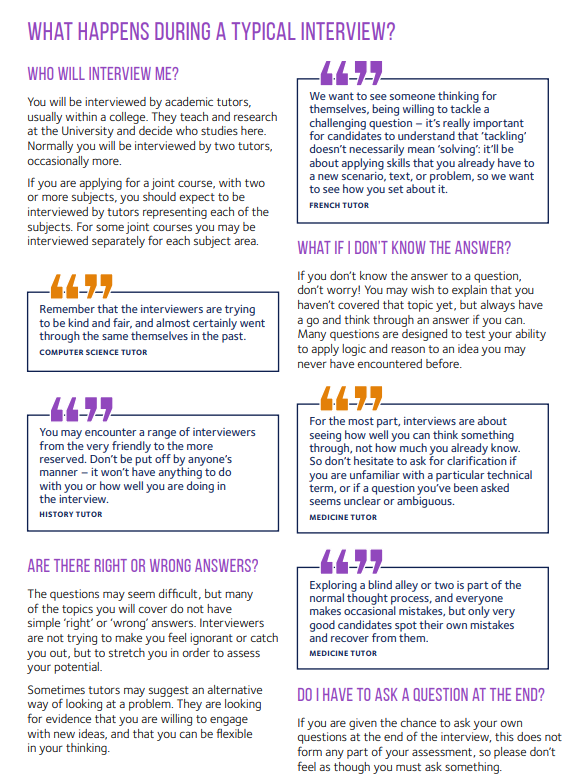今天是2024年12月5日,距离2025年元旦节还有27天,距离2024 WSDA秋季上海区域赛开幕还有16天,最最重要的是,距离2024 WSDA秋季表演性演讲比赛报名仅剩5天!
作为WSDA全新赛事,2024 WSDA秋季表演性演讲比赛自官宣以来就收获了很多同学的关注。表演性演讲的评分考察项有哪些?Cutting、Teaser、Beats等专业术语傻傻分不清?演讲过程中有什么需要注意的地方?贴心如老师,特地为大家整理了表演性演讲“备赛宝典”,赶紧搬好小板凳听讲吧!
01、表演性演讲评分考察项
Interpretation Rubrics
角色塑造Characterization
角色塑造是指演讲者所演绎的角色如何基于剧本来进行思考、行动、移动和发声。演讲者应在声音、身体动作和情感上仔细推敲以塑造角色的独特性,对角色的塑造可以不受限于剧本。同时,演讲者塑造的角色需要和观众能够产生共鸣。构建具有不同层次的表演是演讲者主要挑战之一。并且,在一人分饰多角的情况下,演讲者需要思考角色之间的关系,通过不同的表演层次来展现不同角色之间关系的差异。
Characterization is howyou decide on the character(s) will think, act, move and soundbasedon the script. You will carefully thinkabout how each character should be uniquely distinct with vocal, physical, and emotional choices. Characters can be out of the limits of reality. However, you should craft the characters to which the audience can relate. One of the great challenges that you will faceis tocraft a performance with different levels. You will need to think about the proximity characters would stand in relation to each other, and presentthe difference byperforming invarious physical levels.
走位Blocking
走位(或舞台技术)是指演讲者演绎的角色如何在表演的空间内进行移动。走位有时是为了表现角色的情感状态,而在其他时候,走位是为了表现想象空间中正在发生的事件,比如说你可以通过走位来演绎你正在打开一瓶汽水或者扫地。这些演绎要求演讲者对身体有完全的控制力。角色前后的转变或涉及多个角色之间的切换都需要演讲者进行反复揣摩练习。这些变化的节奏往往很快,需要选手具备相应的体能。演讲者需要思考如何通过身体动作来讲述故事。你需要站在镜子前进行动作逐步分解,在建立肌肉记忆之后可以加快演讲速度。你还可以分层次和分焦点来演绎角色。
Blocking(or Stage tech)is how the character(s) moves in the space you’ve created for them. Sometimes blocking is expressive in nature, symbolizing how that character is feeling emotionally, while at other times, acting out what is occurring in the imagined space i.e. opening up a soda or sweeping the floor. The technical aspectof performing requires your complete physical control. Transitioning, or “popping” between characters should be practiced. These transitions are fast paced, and require strong physical stamina. Consider how you can tell the story by body impressions. You will need to get in front of a mirror and break down the movements. And, you need to increase the speed as you build up muscle memory. Youcan play with levels and focal points.
剪辑Cutting
在表演性演讲中,为了演讲效果对演绎内容进行剪辑非常重要。演讲者需要将表演片段剪辑到十分钟以内,需要对剧本中的对话内容进行编排,并决定讲述故事内容的哪些方面。这会直接影响到表演性演讲上述两个考察项的评分。你可以大声朗读对话,省略那些对讲述的故事没有帮助的内容。你可以运用喜剧元素,比如三段式笑话,或者呼应与引用前面的笑点来增强故事内容的共鸣。你需要思考如何运用肢体动作来描绘故事,因为视觉元素往往能够带来极具创意的笑点。你还需要思考如何利用你通过演讲营造出来的想象空间,来讲述笑话或完成一段戏剧性表演。
As with any interp, it's important to cut for performance. Youwill need to cutyour whole perform into 10 minutes.How youarrangethe literature or dialogue, and what aspects of the story you've decided to tell will directly influence theabovetwo aspects of your performance.Youcan read the dialogue aloud, and remove excessive language that does not build toward the story you are trying to tell. You can also play with comedic elements, like three part jokes, or relatingjokes from earlier partsof theinterpretation. Think about how you will physically presentthe story. You can usevisual elementsto bring out great, creative punchlines. Think about how you will use the imagined environment of your interpretation to tell a jokeor carry out a dramatic piece.
02、表演性演讲术语解释
Interpretation Terminology
Cutting
Cutting剪辑是指演讲者在规定时间范围内完成演绎的原始文献的摘录片段。
A Cuttingis the selection from the original literature chosen by the performer to present within the event’s time constraints.
Teaser
在介绍故事之前,演讲者需要用一段精彩的Teaser预告表演来激发观众的观看兴趣,通常不超过一分钟。
An intriguing preview of the story will be performed before the introduction of the interpretation. The teasers are typically under one minute.
Beats
故事通过一瞬一瞬的动作单位展开,这些单位被称为“Beats节拍”。节拍是表演中的最小动作单位,通常当角色的动机或行为模式发生变化时,节拍也会发生变化。(可以用符号“/”来标记节拍。)
Stories unfold in moment-by-moment acting units iscalled beats. A beat is the smallest unit of action. As a rule,beats shift when a character’s motivation or routine changes. (Beats can be marked “/” like this.)
Popping
Popping是指在幽默型表演性演讲中从一个角色切换到另一个角色的过程,一般这个过程需要简洁快速一气呵成,并可能涉及脚步的动作,但脚步动作并非必需。
Popping is the term used to describe the process of changing from one character to another in a Humorous Interpretation. A skillful character pop is quick, clean, and performed instantly. Popping often utilizes a technique that involves the feet, but foot pops are not necessary.
Melding
Melding是指在戏剧型表演性演讲中从一个角色切换到另一个角色的过程,不同于幽默型表演性演讲中的Popping,Melding往往是角色、场景、环境或视角的一个平滑流畅过渡,但不需要像幽默表演的转换那么快速。
Melding is the term used to describe the process of changing from one character to another in Dramatic Interpretation. A meld is not like a pop used in HI. It is a clean, smooth transition from one character to another or the transition between scenes, environments, or worlds. It also needs to be quick but not instantaneous like a Humorous Interpretation pop.
Focal Points
当一个表演性演讲选手需要扮演多个角色时,Focal Points焦点(一个角色看向的地方)被用来向观众展示另一个角色所在的位置。在日常对话中,我们说话时通常会看着对方。虽然我们不可能时刻都保持眼神交流,但我们总是能回望对方。在表演性演讲中,演讲者必须清楚自己在故事中正看向谁或与谁对话。
When an interper portrays multiple characters, the focal point,the spot the character is looking, is to designate the other character in the scene. In everyday conversation, we look at each other when we are talking. We might not maintain eye contact with them 100% of the time, but we can always look back at them. The interpret must know who or what they are looking at or talking to in their story.
Visualization
Visualization可视化是指演讲者通过心理视觉生成图像的认知过程,即通过他们的表演,向观众展现他们所演绎的角色看到的东西。
Visualization is the cognitive process of generating visual imagery in the mind’s eye of the performer. Interprets must develop the ability to help the audience see what the character is seeing.
Pantomime
Pantomime无实物表演是指演讲者扮演角色时,不需要依靠实物而进行的动作表演,比如削土豆、打字、化妆、喝水、扫地等。选手应当使用真实道具来练习这些技巧,以培养肌肉记忆。如果在无实物表演中需要与某件物品互动,演讲者必须注视物体,以增强真实感。例如:当我们真实的手机放在桌子上时,我们甚至不用看着它就能拿起来。然而在表演性演讲中,选手必须注视着想象的手机所在位置,以便为观众提供可信度和情境感。
Pantomime refers to the actions the character is doing, such as peeling potatoes, typing, applying makeup, drinking, sweeping, etc. Students should practice these techniques with real props to develop muscle memory. If pantomiming with an object, the performer must look at the thing to make it real. Example: Our cell phone might be on the desk next to us. We might not even look at it to pick it up, but the interpret must look to the imaginary phone spot to provide believability and context to the audience.
Sound Effects
Sound effects音效,包括音乐元素,经常被用在幽默型表演性演讲和双人表演性演讲中以增强喜剧效果。但演讲者也可以在其他类型的演讲中通过音效来表现时间的流逝或场景的变化。(注意:确保音效的使用是为了增强作品的展现)
Sound effects, including musical elements, are more often used in Humorous Interp and Duo Interp to increase the comedic effect, but a performer might also use them in other events to show a lapse of time or a change of scene. (Note: Make sure sound effects are used to enhance the piece.)
Environment
Environment环境是由演讲者通过blocking走位和Pantomime无实物表演为角色创造的可以真实生活的世界,这个环境需要在整个演讲中保持一致,或者在解释清楚场景变化时,发生相应的改变。
The Environment is the world that the interpret creates in which their characters can live truthfully and believably. The setting is created through the use of blocking and pantomime. Once created, the environment must be maintained consistently throughout the piece/performance or made clear if/when the location changes.
03、演绎须知
Interpreter Requirements
角色性别演绎
Interpretation of gender
演绎一个角色的关键是尽可能在想象的情境下保持真实。演讲者可以通过角色的声音或身体特征来让观众区分角色性别。(注意:指导老师应该帮助学生避免陷入对角色的刻板印象。)
The key to creating a person is to be as truthful as possible under imaginary circumstances. Some literature impliesthat a student isable to play a gender other than their own. Performing another gender must be believable. Gender might be distinguished not only by the vocal qualities but also by the physicalityof the character. (Caution:The interpretas their coach is not to allow a student to fall into stereotypes.)
角色年龄演绎
Different Ages
根据所选的作品,学生可能需要扮演一个比自己大20、40或60岁的角色。角色年龄演绎非常具有挑战性,以至于学生可能会表现得比较夸张,但不能因此陷入对角色的普遍刻板印象。(比如,并不是所有老年人都是伛偻拄杖的形象。)
Additionally, depending on the piece chosen, a student will be required to portray a character who might be 20, 40, or 60 years older than the student. Age is so challenging to perform that students might create certain exaggerations. For example, not all senior citizens are hunched over and use a cane.
04、关于演讲构思的建议
PLOT Suggestions for Your Interpretation
Freytag’s Pyramid(弗雷塔格金字塔)是一种经典的叙事结构模型。由德国作家古斯塔夫·弗雷塔格(Gustav Freytag)在19世纪提出。它通常用来分析故事的结构,包括五个主要部分:
(1) Exposition(引入):
为观众介绍背景、角色和故事主要冲突。
(2) Rising movement(升华):
故事情节的主要发展阶段,加剧冲突感,增加紧张感。
(3) Climax(高潮):
剧情故事的转折点,主要冲突达到顶峰,情感最为强烈紧张。
(4) Falling Action(转折):
冲突开始解决,故事逐渐进入尾声,降低紧张感。
(5) Denouement(结局):
所有冲突得到解决,告诉观众角色的命运,故事的结局。














